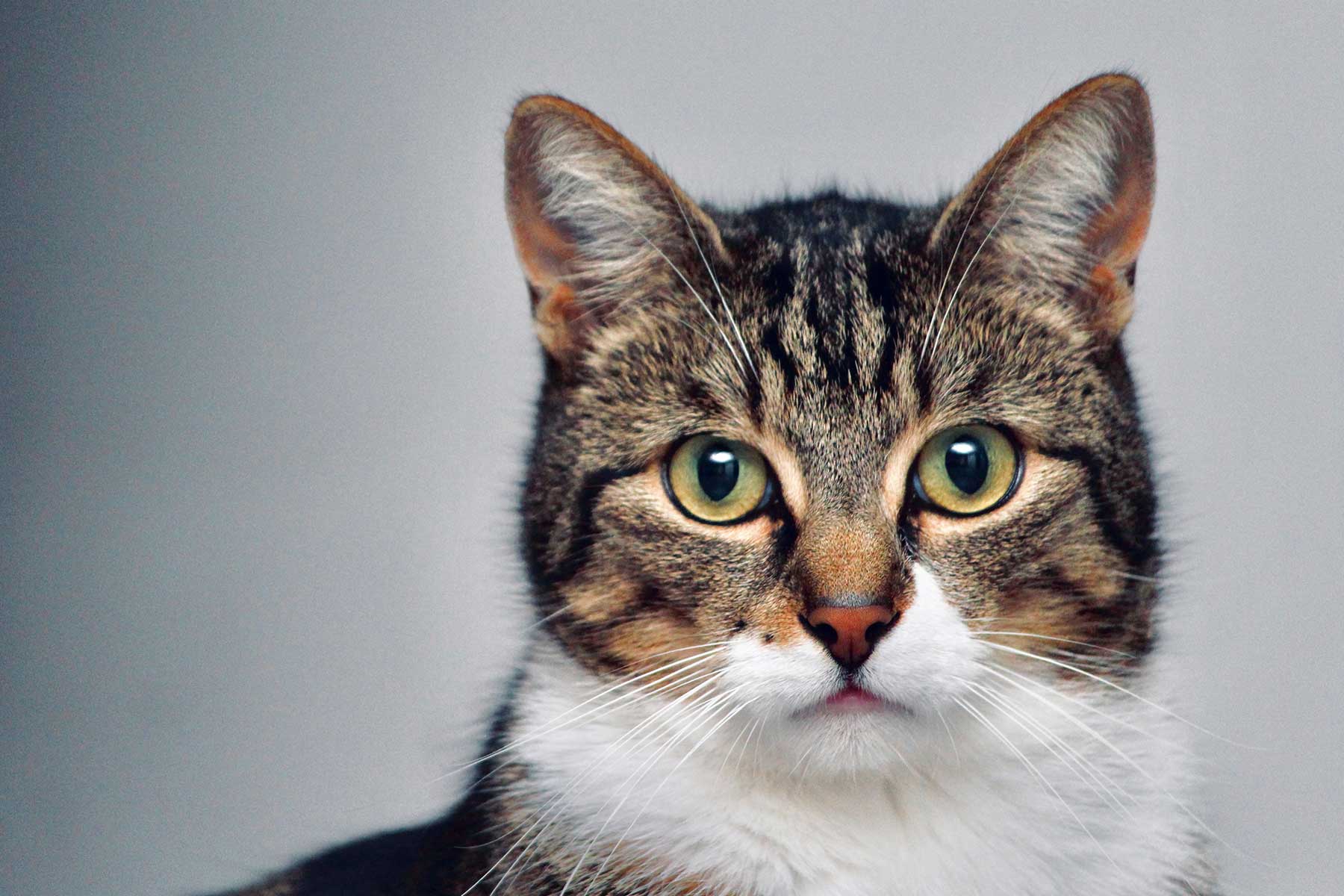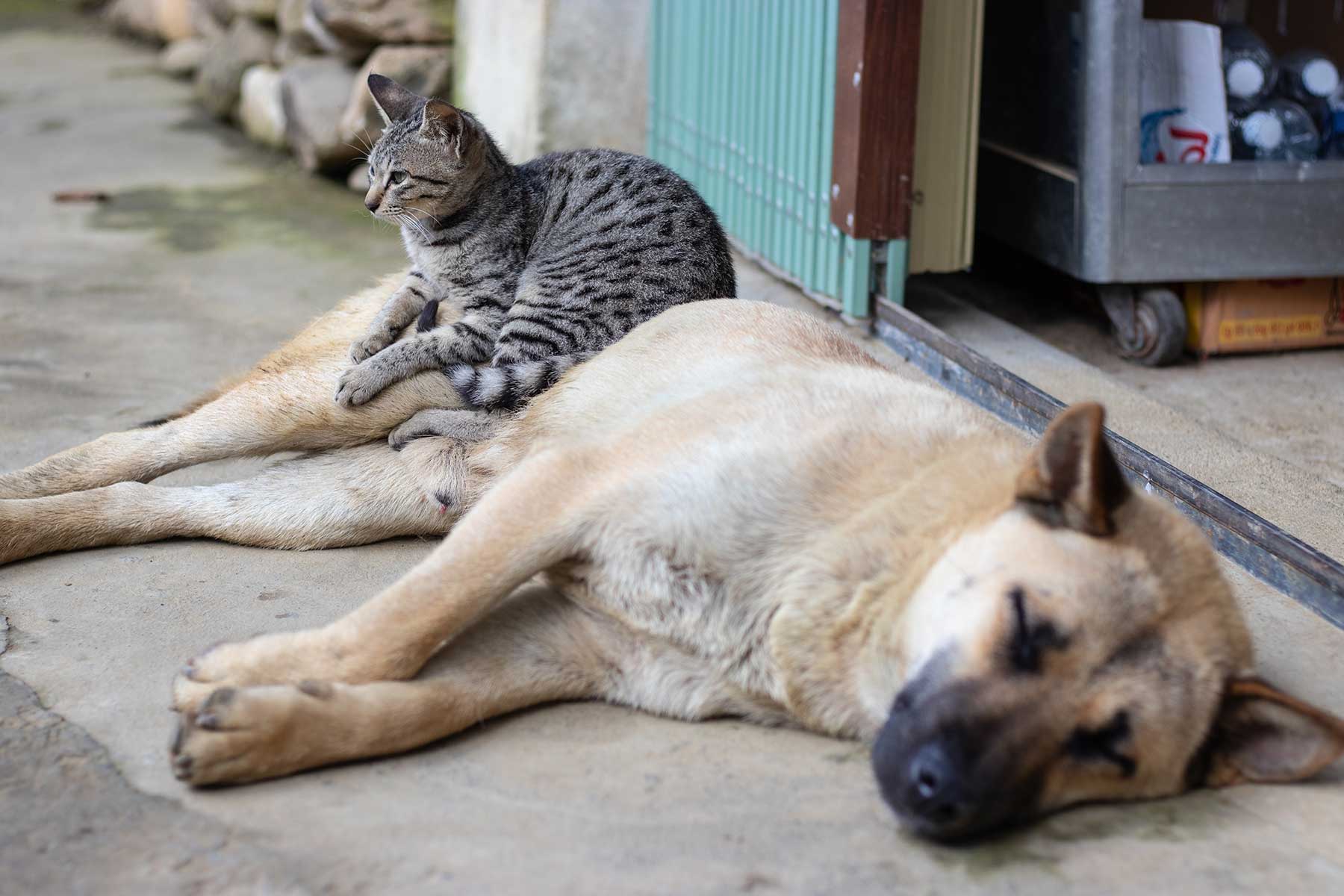Fleas are tiny dark brown parasitic insects that infest the coat and skin of pets. They have an amazing skill allowing them to jump up to 150 times their own length. That’s like a human jumping over 300 metres. Their remarkable jumping skills allow them to transit easily between hosts and the surrounding environment.
How do you tell if your pet has fleas?
One of the first signs of a flea infestation is that your pet will be scratching and seem quite irritated. On closer examination you could find adult fleas in the coat or at the base of the fur on the skin. You may even find flea dirt that looks like small black specks of grit, similar to finely ground pepper. This is actually digested dried blood.
How do pets get fleas?
Flea eggs can remain dormant for astonishingly long periods of time under a variety of conditions. They lay dormant in the garden, or in your carpet and furniture, until they are able to hitch a ride. They jump great distances to find a host and travel on pets and even on people.
Why is it important to treat and prevent fleas?
Fleas are the number one cause of skin disease in pets and can cause problems ranging from simple itchiness to weeping sores, scaly skin and a strong smell. Some dogs and cats are even allergic to flea bites (a condition known as Flea Allergy Dermatitis), where one bite sets off a horrible reaction.
If you think your pet might have a flea allergy, read one of guides:
Fleas also have the ability to transmit tapeworms in dogs and cats. Fleas also bite us!
Why do you need to treat for fleas all year round?
Fleas are much easier to prevent than eliminate, so for the most effective method of flea control start before you see fleas. Fleas are not just a summer problem, heating used in winter provides a wonderful environment for flea development too.
Total Wellness Plan
Did you know that you can save on pet all all year round AND that we’ll deliver monthly parasite contol to your door? The Total Wellness Plan is our annual healthcare plan for pets and includes 12 months of flea prevention as well as other necessary parasite control for your pet, alongside unlimited consultations*, annual vaccinations and more.
*For Classic plan members only.
Why do fleas spread so quickly?
Fleas breed at an enormous rate. The fleas you see on your dog represent only 5-10% of the fleas in the environment. The rest of the population is represented in the egg and larval stages found in your carpets, furniture, bedding and garden.
The lifecycle of a flea
5% of fleas live in the environment as an adult, 95 % of fleas live as eggs, larvae or pupae. For effective flea control it is essential to break the lifecycle in the environment.
- Adult Fleas – jump onto your dog or cat, feed on its blood and then start laying eggs.
- Eggs – one female lays up to 50 eggs per day, they drop off in carpets and bedding before hatching.
- Larvae – the hatched eggs release larvae which move away from light, deeper into carpets and under furniture before developing into pupae. The larvae feed on organic debris and at this stage can consume tapeworm eggs, allowing them to become an intermediate host for the development of tapeworms.
This lifecycle can take as little as 2-3 weeks but can last up to 6 months. To rid your household from fleas, you must break this cycle.
A well-designed program is necessary to maintain a flea free environment, and prevention is definitely better than cure. There are many different flea products available today and the options can be confusing. Not all products are registered for use in young puppies and kittens and may be quite dangerous.
How do you protect your pet from fleas?
Smelly and potentially toxic chemicals are a thing of the past, now we can enjoy more recent innovations.
When undertaking flea control you have to consider the various stages of the lifecycle. In severe infestations, it is sometimes necessary to treat both the pet and the environment. However, due to the effectiveness of modern flea insecticides, treatment of your pet is often all that is needed. Here are some options:-
1. Products to rid fleas on your pet
- Spot on treatments – very effective, easy to apply, once a month treatments. Some products include worming or heartworm treatment as well as flea treatment. Examples of spot on treatments include Advantage, Activyl, Advantix, Advocate and Revolution.
- Flea shampoo – kills fleas on your pet at the time of the bath, but once rinsed off have no lasting effect on fleas.
- Rinses and sprays – vary in effectiveness, many need to be used weekly, some more often if severe flea problems are present. Rinses must be applied to a clean, mostly dry coat at the correct concentration to be effective.
- Collars & Powders – are helpful, but not the most effective treatment
2. Prevent new eggs
Products that stop fleas breeding and even make the female flea sterile. eg Activyl.
3. Control the environment
Adopt control strategies including;- Vacuum the carpet 2-3 times a week to remove eggs and stimulate dormant fleas, wash pet blankets weekly (in the washing machine) and leave in the sun to dry, spray the house, kennels and yards with an adult flea killer (professional treatment recommended), fog the house to prevent larvae developing.
The best solution for your situation
Our veterinary and nursing team are fully trained in flea management and can assist you in choosing the product most suitable for your pet.
Fast flea facts
- Flea fossils date back to the Lower Cretaceous period, meaning fleas have been around for about 100 million years. At that time, their neighbours might have been a Tyrannosaurus Rex or Triceratops!
- Some fleas can jump 150 times their own length. That compares to a human jumping 300 metres. One flea broke a record with a four-foot vertical jump.
- Undisturbed and without a blood meal, a flea can live more than 100 days. On average, they live two to three months.
- Female fleas cannot lay eggs until after their first blood meal and begin to lay eggs within 36-48 hours after that meal.
- The female flea can lay 2,000 eggs in her lifetime
- The female flea consumes 15 times her own body weight in blood daily.
- While adult fleas all suck blood from a cat or dog or other mammal, their larvae live and feed on organic debris in the host animal’s environment.
- Flea larvae are blind.
- If you happen to see one flea, there may be more than 100 offspring or adults looming nearby in furniture, corners, cracks, carpet or on your pet.
- Fleas are often confused with bedbugs, lice and ticks.
- The largest recorded flea is the North American Hystrichopsylla schefferi, measuring 12mm in length – almost 1/2-inch!











